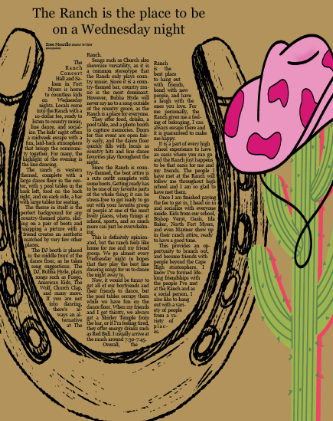Social media has conquered the fashion industry
Online shopping and fashion influencers have hypnotized the population.
The influence of fashion has left magazines and runaway shows, with social media sites taking the wheel instead.
Younger generations have turned to sites such as Instagram and Tiktok for current trends, but has this permanently ruined the way society looks at fashion?
In the past, what were considered to be “eras of fashion” lasted for decades: twenties, fifties, seventies- but modern times and technology have changed the pacing of fashionable trends.
Keegan Hannan, a senior at Cape Coral High School, believes social media confuses its young audiences when it comes to fashion.
“I try to stay away from fashion inspiration social media sites,” he stated, “It frequently causes me to be conflicted on whether I actually like a piece of clothing or if I’ve just seen enough of it to be influenced.”
Once an item is considered to be trendy, whether it be an article of clothing or jewelry, social media algorithms will continuously flaunt said item. At times, it even attempts to get you to purchase it.
Hype surrounding certain fashionable items create continuous cycles of what are known as microtrends- trends that gain popularity quickly but are short term.
The need to constantly fit in with these microtrends have led people to make large purchases from fast fashion companies like Shein or Romwe.
Fast fashion companies normally create low quality clothes and products for cheap, and this overconsumption of clothes has led people to throw away items that are no longer considered fashionable or trendy.
Alyssa Ferrence, a junior at Cape High, believes the constant throwing away of clothes has negative impacts.
“It’s really harmful for our environment, and for children in other countries who are being taken advantage of,” stated Ferrence.
While it is important to hold fast fashion brands accountable, it is also important to not place blame on the lower class consumers that want to fit in with modern trends.
Yet, another harmful result of microtrends and overconsumption is the stigma surrounding those who continue to wear clothes that are considered to be out of style.
Wearing clothes that are no longer trendy can lead to cyberbullying or being made fun of by classmates.
“[Social media] has changed the way we look at fashion, by blurring the lines between fashion and trendy,” stated Bailey Spotz, a junior at Cape High.
In a positive light, more sustainable fashion is being promoted through various social media influencers and some celebrities.
“I think powerful figures in the fashion industry are realizing the importance of producing and purchasing clothing that is timeless,” stated Hannan.
Thrifting is an example of this, creating a trendy and sustainable way to purchase second hand clothing that would normally end up in a landfill.
Artists have also found innovative ways to create custom clothing from recycled and reused materials.
Social media has conquered the fashion industry and its followers by allowing everyone to express themselves freely. Technology is always changing, and it seems to continue bringing the world of fashion with it.
Your donation will support the student journalists of Cape Coral High School. Your contribution will allow us to purchase equipment and cover our annual website hosting costs.








